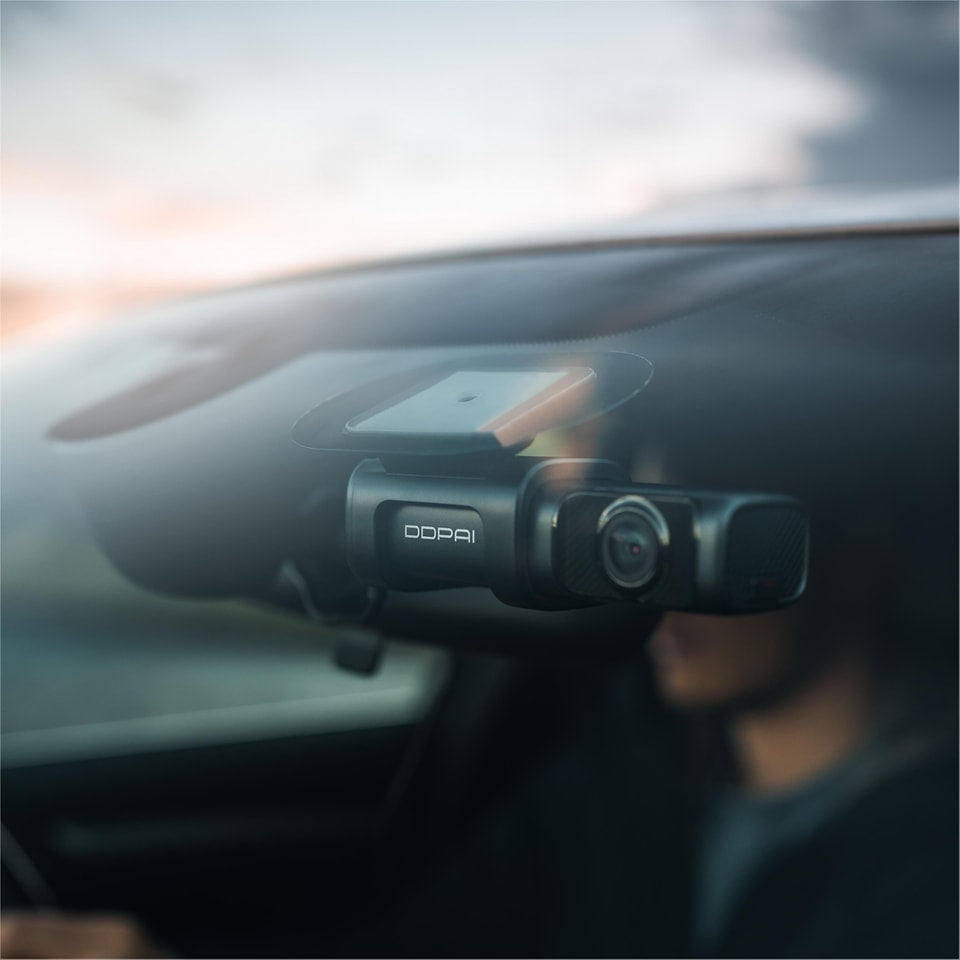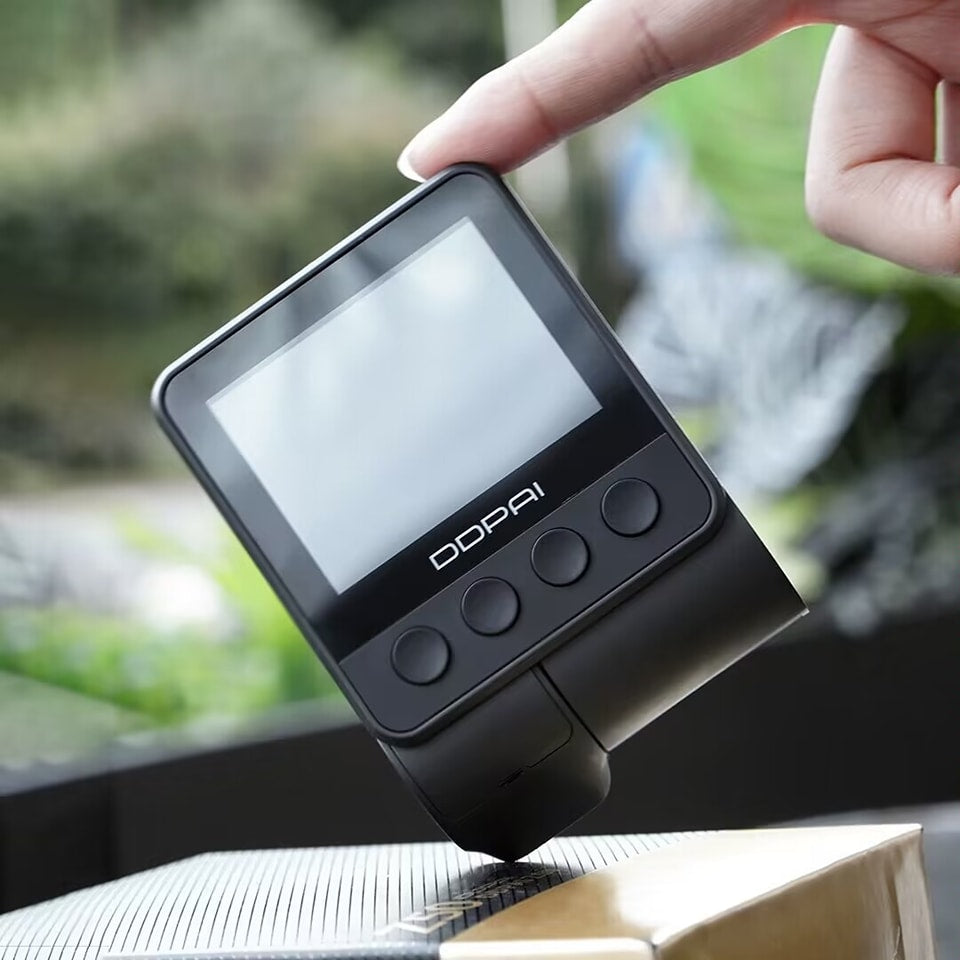Dash cams are increasingly seen as a useful addition to vehicles, offering crucial evidence in the event of traffic incidents, helping guard against potential threats, and encouraging safer driving habits. While not everyone may see them as a necessity, there's no denying their growing significance. With the wide range of available options, selecting the right dash cam can sometimes be complex. Let's simplify this process and discuss the essential aspects when looking for a suitable dash cam.
Key Factors to Focus on When Choosing a Dash Cam
Consider Your Budget
Dash cams today span a broad price spectrum, from $30 to over $400. While your budget certainly influences your choice, remember that the cheapest option may not offer the best value. It's essential to balance cost against the features you desire.
Are you a first-time dash cam user? Consider starting with a more budget-friendly 1080p dash cam, offering quality footage without the price tag of a 4K model. However, if a superior resolution is a priority, you may be willing to invest more in a 4K dash cam.
When deciding on your budget, be clear about your specific needs. A higher price doesn't always translate into a better fit, and it's about finding a dash cam that caters to your needs effectively and efficiently.
Prioritize Resolution
The resolution of a dash cam is of utmost importance in delivering clear and sharp video quality. The heart and soul of any dash cam's function is to accurately capture on-road situations, such as license plate numbers and detailed features of other vehicles. This clarity becomes essential in traffic incidents, where specific details can significantly affect disputes or insurance claims.
A lower resolution might result in losing critical details, rendering your dash cam ineffective when you need it the most. Hence, it is recommended that, at the very minimum, your dash cam should have a resolution of 1080p, ensuring that key information can be captured in sufficient detail.
2K or 4K dash cams are excellent options for those who want the best from their dash cam. They demand a higher investment but offer superior clarity and sharpness, which can benefit regular users and those needing to capture every minute detail.
Understand SD Card Storage Requirements
Remember, your storage needs are directly linked to your dash cam's resolution. Higher resolution leads to larger file sizes. Kingston says an hour of recording at 1080p uses around 6GB of storage. Calculating your daily drive time can help determine your dash cam's appropriate SD card size.
Number of Channels
The number of channels a dash cam has determines its recording capabilities. Single-channel dash cams are the basic type, recording footage exclusively from the front of your vehicle. They represent the most budget-friendly option and are ideally suited for drivers requiring simple visual documentation of events occurring ahead of them.
Dual-channel dash cams, on the other hand, provide more comprehensive coverage. They record front and rear views, offering a holistic perspective of your vehicle's surroundings. Whether it's documenting unpredictable pedestrian behavior, capturing the erratic actions of other vehicles, or validating your normal driving in the event of a rear collision, dual-channel dash cams provide the evidence you need.
Other Factors to Consider When Choosing a Dash Cam
Parking Mode
Parking mode allows the dash cam to automatically start recording if it detects motion or impact while your vehicle is parked. It provides an extra layer of security when you're away from your car, capturing potential hit-and-runs or vandalism incidents.
Night Vision
The ability of a dash cam to record clear footage in low-light conditions is essential. Not all incidents occur during daylight hours; a dash cam with superior night vision technology can provide high-quality video during nighttime drives. This is achieved through enhancements like advanced sensors and wider aperture lenses, which improve the camera's ability to capture detail in low-light situations.
GPS
A dash cam with a GPS feature adds extra context to your footage by recording your vehicle's speed and location in real time. This data can be crucial in providing evidence during an incident, corroborating your version of events. It can verify your speed during an accident or locate your vehicle in case of theft.
Frame Rate
Frame rate refers to the number of images a camera can capture per second, expressed in frames per second (fps). A higher frame rate ensures smoother and more seamless video playback. While 30 fps is standard and adequate for most situations, a dash cam that records 60 fps can provide more fluid and detailed footage, capturing more information for critical moments.
Sound Recording
Some dash cams have a built-in microphone to record audio inside the vehicle. This can help document verbal exchanges during an incident or capture important details spoken at the time. However, it's essential to inform passengers they're being recorded to comply with privacy laws. Check the laws in your area to ensure you're using this feature legally and ethically.
Which Dash Cam Should I Buy?
We Recommend: Mola N3 Pro

DDPAI Mola N3 Pro has top-notch features such as 1600p high resolution in its main camera, superior night vision capabilities, and around-the-clock parked-car monitoring to catch any mishaps, all at an extremely reasonable price point. In addition to a front-facing camera, it includes a rear camera, offering two unique perspectives to document your vehicle's movements and surroundings. It maintains a compact design, making it discreet on a windshield, while its user-friendly interface is simple to navigate. Its control buttons are clearly labeled and readily accessible, enhancing the user experience.
While it's designed to operate flawlessly in a wide range of temperatures, its supercapacitor technology ensures reliable performance even in harsh weather conditions. For those seeking advanced features without breaking the bank, the Mola N3 Pro is an excellent option.
Budget Pick: MINI PRO

Priced at just $39.99, the DDPAI Mini Pro is an impressive budget pick that truly lives up to its 'Tiny but Mighty, Small but Strong' mantra. Despite its compact size, it comes loaded with features such as a 1296P UHD resolution for crystal clear recording, a rotatable 140° wide-angle lens for capturing a broad field of view, loop recording for automatic overwriting of older footage, and night vision capabilities to ensure clear recording in low-light environments.
The Mini Pro further impresses with its safety-oriented features. In emergencies, its built-in gravity sensor activates to capture photos and videos, storing them separately to prevent overwriting. The built-in supercapacitor ensures resistance to high temperatures for safe use. With a separate DDPAI voltage reduction cable, you can enable the 24/7 parking monitoring feature for peace of mind. Coupled with seamless app integration for easy video playback, download, and sharing, the DDPAI Mini Pro is a strong contender for anyone seeking a powerful yet affordable dash cam.
Upgrade Pick

Z50 dual 4K dash cam from DDPAI is your go-to choice when you're ready for an upgrade. With a Sony IMX415 Sensor, built-in WiFi & GPS, superior night vision, and impressive resilience in extreme weather conditions due to its supercapacitor, this dash cam delivers premium performance and reliability.
Featuring an ultra-high-definition 8MP camera and Dual 4K + 1080P recording for simultaneous front and rear monitoring, the Z50 makes every journey a cinematic experience. Its Realcube Image Technology brings lifelike colors and details to the fore, and thanks to NightVIS technology, it performs remarkably well in low-light situations too. An exciting addition is the D² Save Emergency Storage, which preserves crucial footage even in case of a memory card error. As a bonus, this high-end dash cam also offers Advanced Driver Assistance Systems, a virtual gaming experience with Sense Reality 2.0, and smart parking monitoring. It supports up to 128GB class 10 Micro SD Card. Integrated seamlessly with the DDPAI App, you can preview, playback, download, and edit footage with just a few taps. With all these advanced features, the Z50 is a worthy upgrade pick for those who want to take their dash cam experience to a new level.
FAQs about Dash Cams
Will a Dash Cam Lower My Car Insurance?
In the United States, most car insurance companies do not offer a direct discount for installing a dash cam. But a dash cam can indirectly save you money on car insurance. If you're involved in an accident, and it's unclear who's at fault, the footage from your dash cam could prove your innocence and prevent your premiums from increasing due to an at-fault accident on your record.
Is Dash Cam Harmful to My Car Battery?
A dash cam itself won't harm your car battery under normal circumstances. However, if a dash cam is improperly installed or left running for extended periods when the engine is off, it can drain the battery.
Typically, a dash cam powers on and starts recording when the ignition is turned on and powers down when the ignition is turned off. However, some dash cams offer a parking mode feature that lets the camera stay on and monitor your car even when the car is parked, and the ignition is off. If this feature is used extensively without proper power management, it could drain your car battery.
What Happens if the SD Card is Full?
When the SD card in a dash cam becomes full, the camera usually employs a feature called "loop recording." This feature allows the dash cam to automatically overwrite the oldest files on the memory card, ensuring it can continue recording even when it is full.
While this means you don't have to manually clear the SD card regularly, it also means that any important footage you wish to keep must be saved or transferred elsewhere before it gets overwritten.
Does a Dash Cam Need to Be Professionally Installed?
No, a dash cam does not need to be professionally installed in most cases. Dash cams are typically designed for easy setup and can be installed by the user. The common steps involved in the installation are:
- Mount the dash cam on the windshield using the suction cup or adhesive mount.
- Adjust the camera angle to capture a wide view of the road.
- Connect the dash cam to the power source. This is usually the car's 12V power outlet (the cigarette lighter) using the supplied power cable.
- Arrange and tidy the cable along the car's interior trim for a clean setup and to avoid any loose cables hanging around.
- Insert a MicroSD card into the dash cam.
- Set the date, time, and other preferences according to the manufacturer's instructions.


Leave a comment
This site is protected by hCaptcha and the hCaptcha Privacy Policy and Terms of Service apply.